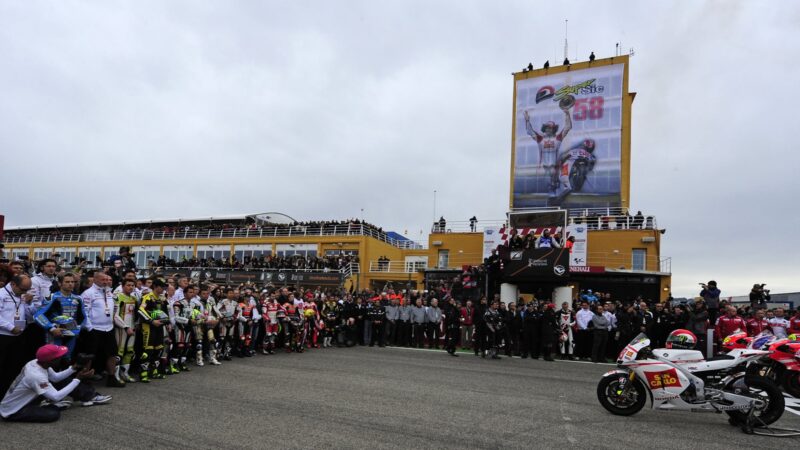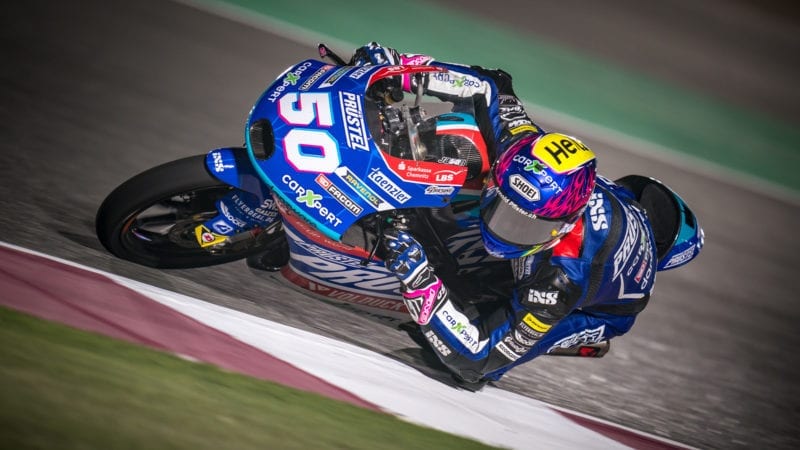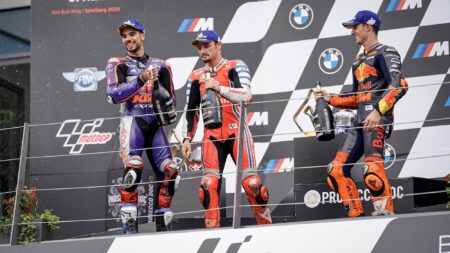Surely that was a mistake? The next time this happens – and sadly there will be a next time – the minute’s silence should be held after the race, in place of the podium ceremony. If the riders want to race.
However, the biggest concern is that Dupasquier is MotoGP’s fourth fatality in ten and a half seasons, a sobering rate of roughly one death every two and a half years. The previous three riders to die in grands prix were Luis Salom, at the 2016 Catalan GP, Marco Simoncelli, at Sepang in 2011, and Tomizawa.
During the 16 years before Tomizawa’s passing there was one fatality – Daijoro Kato at Suzuki in 2003.
The last time there were so many deaths was in the early 1980s, when primary safety (motorcycles and racetracks) and secondary safety (riding gear and medical back-up) were infinitely worse than they are now.
MotoGP has never been safer, so why all the fatalities?
Tomizawa, Simoncelli and Dupasquier all lost their lives in similar circumstances – they suffered what should’ve been relatively innocuous falls, only to be hit by following riders.
This is what happens when the racing gets closer and closer. Now the machinery is so equal that riders circulate in packs, within centimetres of each other.
And why is the machinery so equal? Because you and I are more likely to turn on our TVs to watch a multi-rider brawl than a tedious procession, so the technical regulations have been written to create that kind of racing. So we are all to blame, or rather the human condition and its desire for excitement is to blame.

Valencia 2011 – the minute’s silence held for Marco Simoncelli
Javier Soriano/AFP via Getty Images
Moto3 offers the closest racing of all – huge swarms of riders ducking and diving, unable to get away from each other because all the bikes have the same performance. Many fans get a huge thrill watching a dozen or more Moto3 riders swapping positions at every corner, sometimes millimetres apart, other times locking knees, elbows and handlebars.
As fans of racing we sit there mesmerised – how is it possible that they avert disaster, time after time? But I’ve been saying it for several years: it’s only a matter of time before someone goes down in the middle of a Moto3 group and the riders immediately behind are unable to take avoiding action.
This could’ve happened many times at the end of the start/finish straight during this year’s second Moto3 race at Losail, during which 16 riders were jumping into and out of each other’s slipstreams, flat-out in sixth gear. Instead Dupasquier crashed at the top of the hill at Arrabbiata 2 in the final moments of Q2.





